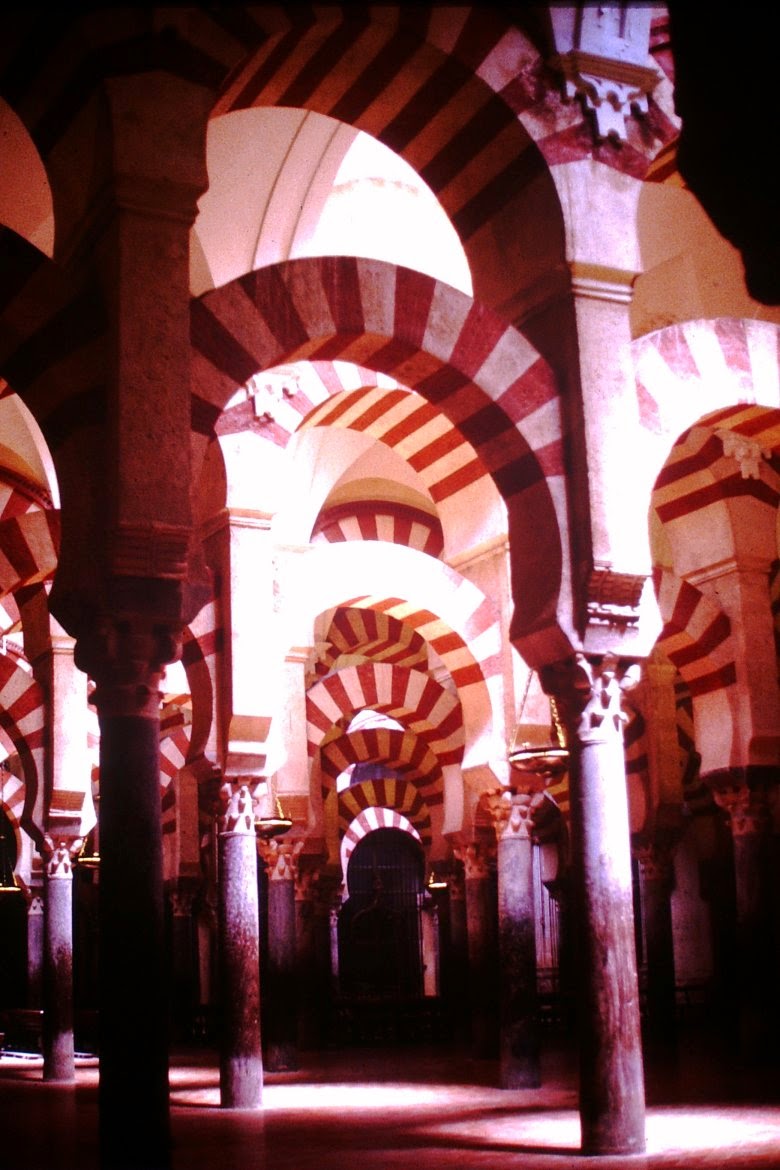One of the places which we visited, although only for a couple hours, was the fabled city of Córdoba. When the Moslem Moors from North Africa invaded most of Spain in A.D. 711, they made Córdoba their capital. At its height in the 10th and 11th centuries, it was one of the most splendid, cultured and populous cities in the world. It boasted a population of 500,000, a university, and the world's largest library at that time. It had 3000 mosques, but the Great Mosque of Córdoba rivaled the mosques of Mecca and Damascus in its size and beauty.
In 1236 the city was reconquered by the Christians. Córdoba went into decline. The Great Mosque was converted into a cathedral.
We had a very short time to have lunch and to wander the labyrinthine streets of Córdoba's "old town". The "old town" has been declared a UNESCO World Heritage Site.
The remainder of our time in Córdoba was devoted to visiting "La Mezquita", the former Great Mosque.
The exterior of the huge building today shows only traces of its former Moorish splendor.
The minaret is now the bell tower of the Cathedral.
The mosque was completed in A.D. 987. It was built on the site of a Visigothic Christian church, which in turn had been built on the site of a Roman temple. The interior of the mosque contained a vast forest of 1293 columns. The granite and marble columns were taken from Roman ruins throughout the region. They are topped with arches made of jasper and onyx. It was designed to resemble a huge grove of palm trees.
Some of the beautiful Moorish decoration remains.
The Christians tore out more than 300 of the columns to build their cathedral within the former mosque, a jarring contrast to the original architecture.
Emperor Charles V lamented, "They have taken something unique in all the world and destroyed it to build something you can find in any city."










No comments:
Post a Comment